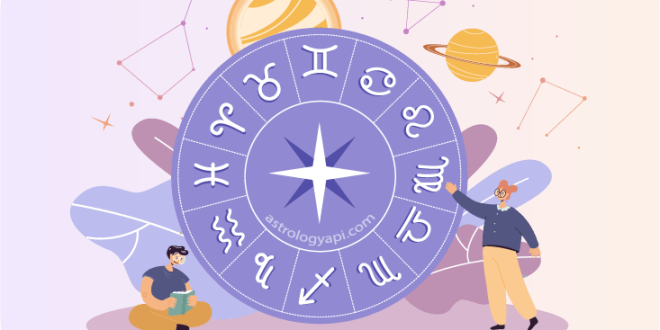A Kundali, also known as a natal chart or horoscope, is an astrological chart created based on the exact time, date, and place of a person’s birth. It serves as a cosmic blueprint that depicts the positions of the planets, stars, and other celestial bodies at the time of birth. In Vedic astrology, a Kundali plays a crucial role in understanding an individual’s personality, life path, strengths, weaknesses, and significant life events. It is an important tool used to guide decisions about personal, professional, and spiritual aspects of life, especially in Indian culture.
The Basics of Kundali
A Kundali is divided into 12 houses, each representing different aspects of life such as personality, relationships, career, wealth, health, and spirituality. These houses correspond to various zodiac signs, which are believed to influence specific areas of a person’s life based on where planets were located at the time of birth.
The primary components of a Kundali include:
- Rashi (Zodiac Signs): The 12 zodiac signs (Aries, Taurus, Gemini, etc.) are distributed across the 12 houses. Each sign governs certain qualities and behaviors that manifest in different areas of life depending on the house they occupy.
- Grahas (Planets): The nine planets in Vedic astrology—Sun (Surya), Moon (Chandra), Mars (Mangal), Mercury (Budh), Jupiter (Guru), Venus (Shukra), Saturn (Shani), and the shadow planets Rahu and Ketu—play a significant role in shaping an individual’s destiny. Each planet has its own characteristics and influences based on the house and sign it occupies in the Kundali.
- Houses: The 12 houses of the Kundali represent different life domains:
- 1st House: Self, personality, physical appearance
- 2nd House: Wealth, family, speech
- 3rd House: Siblings, communication, courage
- 4th House: Home, mother, emotions
- 5th House: Education, children, creativity
- 6th House: Health, enemies, daily routine
- 7th House: Marriage, partnerships, relationships
- 8th House: Transformation, death, inheritance
- 9th House: Luck, higher education, spirituality
- 10th House: Career, social status, profession
- 11th House: Gains, aspirations, friendships
- 12th House: Losses, expenses, liberation
- Nakshatras (Constellations): There are 27 Nakshatras or lunar constellations in Vedic astrology, and the moon’s position in one of these Nakshatras at the time of birth gives further insight into a person’s emotional and mental attributes.
Types of Kundali
There are different types of Kundalis depending on their purpose and the specific area of life being analyzed. Some of the most common types are:
- Janam Kundali: Also known as the birth chart, the Janam Kundali is the most fundamental type of Kundali, depicting the planetary positions at the time of birth. It is used for analyzing the overall life of an individual, including personality traits, relationships, career, and health.
- Dasha Kundali: This type of Kundali focuses on planetary periods or “dashas.” In Vedic astrology, a dasha is a period during which a specific planet exerts its influence over a person’s life. The Vimshottari Dasha system is the most widely used, dividing a person’s life into periods ruled by different planets.
- Guna Milan Kundali: This type of Kundali is used for matching horoscopes before marriage. It involves comparing the charts of two individuals to assess their compatibility in various aspects, such as temperament, family life, and health. The Guna Milan system calculates points based on the alignment of planets and Nakshatras in the charts of both individuals. A score of 18 out of 36 is considered acceptable for a good match.
- Prashna Kundali: A Prashna Kundali is cast for a specific moment when a question is asked. It provides insights and predictions based on the planetary positions at that time, helping in decision-making or solving problems.
Importance of Kundali in Vedic Astrology
Kundali plays a significant role in the lives of many individuals, particularly in Indian culture, where astrology is deeply embedded in traditions and rituals. Some key aspects include:
- Personality Analysis: The Kundali provides a detailed analysis of an individual’s personality traits, strengths, weaknesses, and potential challenges. It offers insight into their temperament, emotional makeup, and tendencies in various life situations.
- Career and Financial Guidance: A Kundali helps in identifying career choices that align with an individual’s natural abilities and planetary influences. It also provides predictions related to financial gains, losses, and overall prosperity.
- Health and Well-being: By analyzing the planetary positions in specific houses (such as the 6th house for health), a Kundali can indicate potential health issues and suggest favorable periods for recovery or medical treatment.
- Marriage and Compatibility: In Indian culture, the matching of horoscopes or Kundalis is often a prerequisite for marriage. Guna Milan and other compatibility checks help families and individuals assess whether the marriage will lead to a harmonious and prosperous relationship.
- Auspicious Timing (Muhurta): Kundali is used to determine the best time or “Muhurta” for important events like weddings, business ventures, and religious ceremonies. By choosing a time when planetary influences are favorable, it is believed that success and positive outcomes are more likely.
Conclusion
A Kundali is more than just a chart of planetary positions; it is a reflection of an individual’s life path and potential. Vedic astrology offers a deep understanding of how cosmic forces influence human existence, and a Kundali serves as the map that helps navigate this connection. Whether for self-awareness, decision-making, or predicting future events, a Kundali remains a timeless tool in astrology, offering profound insights into life’s most important questions.
 Diverse Perspectives: Insights & Stories Exploring Ideas, Sharing Knowledge
Diverse Perspectives: Insights & Stories Exploring Ideas, Sharing Knowledge





